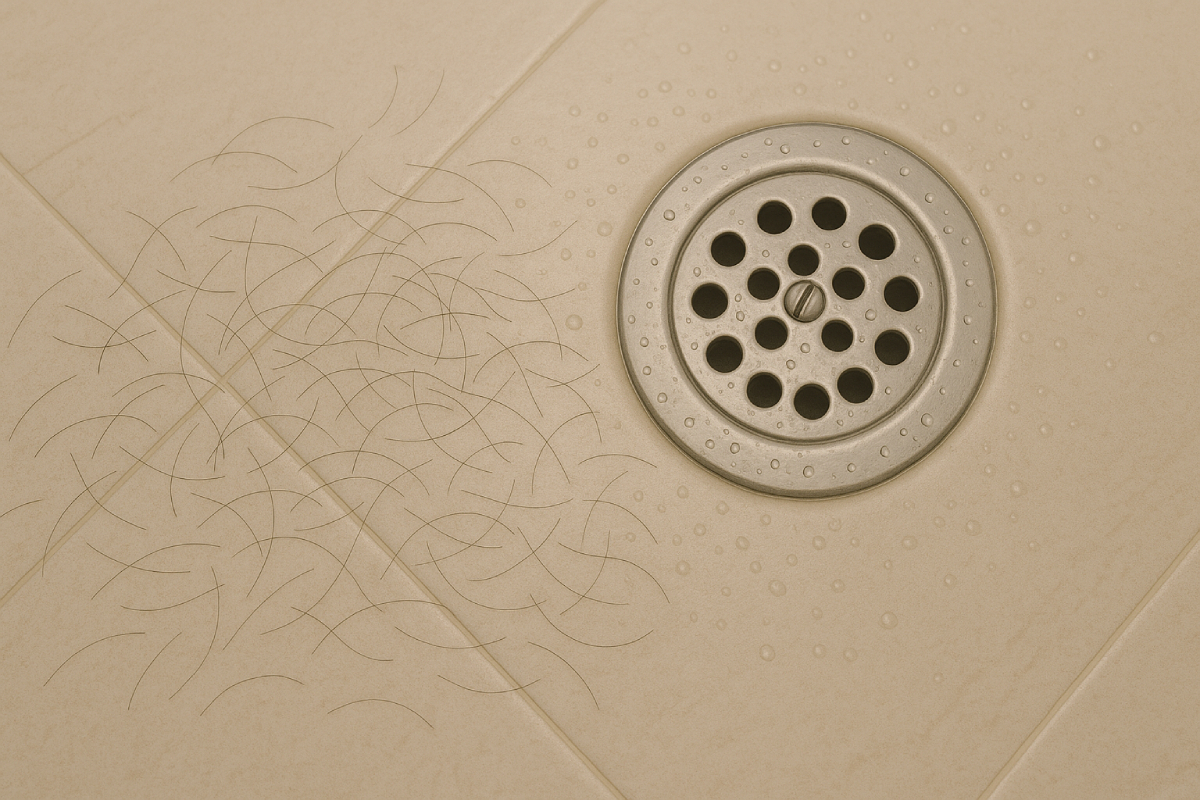Have you ever caught a glimpse of yourself in a photo or security camera and thought, who is that bald guy? Only to realize—that bald guy is you!
If you suffer from male pattern baldness, you may be asking yourself: How bad is this? How much more will I lose?
If you’ve wished for a way to classify your degree of hair loss so you could better understand it and predict what the future might hold, today’s hair blog is for you.
What is The Norwood Scale?
The Norwood Scale was devised in 1975 by hair transplant surgeon Dr. O’Tar Norwood, M.D., as a revision to the earlier work of Dr. James Hamilton, M.D. Hamilton, a Yale anatomist, was among the first to classify male pattern baldness as a process comprised of distinct stages. Norwood eliminated one of Hamilton’s eight hair loss stages, and made significant revisions to the rest, including the addition of four sub-stages: IIIa, III vertex, IVa, and Va.
The Norwood Scale is comprised of two primary hair loss patterns, and a number of less-common forms. Norwood based his scale on the observation that hair loss generally starts at and progresses from the temples and/or the vertex of the head (a.k.a., the crown).
The Hair Loss Types & Stages of The Norwood Scale
Type I – Type I is sometimes referred to as “Juvenile Hairline” because the hairline of these men generally looks unchanged compared to when they were young. A few, genetically-lucky men reach their golden years without transitioning from this stage. Ronald Reagan was a good example.
Type II – These men generally aren’t considered to be suffering from male pattern baldness. Rather, almost all men between the ages of 17 and 30 experience a mild amount of natural hairline recession. This stage is often referred to as a “mature” hairline. Again, some lucky men remain in this stage most of their lives. Jon Hamm is a good example.
Type III – Type III represents the least amount of hair loss on the Norwood Scale to be considered male pattern baldness. Type III always includes recession at the forehead corners, formed in the shape of an ‘M,’ a ‘U,’ or a ‘V.’ In extreme, “Island” Type III cases, the corner recession leaves a tuft of hair situated like an island on a bare forehead. Type III men generally have more treatment options and a better treatment prognosis compared to those at later stages. Tom Hanks during his Forrest Gump years is a good example.
Type IIIa – The A subtypes differs from the regular pattern in that the front hairline moves back uniformly, not just the temples. The forehead therefore appears little bigger but the remaining hair is uniformly “normal” in thickness. This is a great hair transplant candidate because there is very localized loss.
Type III vertex – In this sub-type, hair loss is generally centered at the crown or the “vertex” of the scalp, without recession of the frontal hairline. These men display early signs of the dreaded “bald spot.”
Type IV – In Type IV, hair loss at the vertex becomes see-through but not bald, with recession at the hairline also continuing. These men, however, retain a significant strip of hair between the two areas. Their treatment outlook is generally positive.
Type IVa – In IVa, the hairline marches back a little further from its original position creating even more forehead. These men may also be good transplant candidates when the donor hair is ample in supply.
Type V – At this stage, the vertex and hairline remain separated by a swath of hair, but separation is far-less distinct. These men have notable hair loss, fewer treatment options, and less-favorable treatment outcomes compared to Type IIIs and IVs. Actor James Gandolfini, from TV’s The Sopranos, was a good example.
Type Va – There’s no swath of hair in the middle like in regular pattern V. The hairline has continued to proceed beyond the midpoint of the top of scalp but without true loss of the vertex. There are still options for these patients, but they do have notable hair loss.
Type VI – At this stage, vertex and hairline are mostly joined, with only fine sprigs of hair remaining on top of the head in small patches. Men at this stage can still benefit from hair loss treatment, but goals and expectations need to be realistic. Comedian Louis CK is a good example.
Type VII – Type VII is the most severe stage of hair loss on the Norwood Scale. These men are thought of as completely “bald,” sporting the slim horseshoe of hair running around the sides and back of the scalp. Hair-treatment at this stage is far-less effective compared to earlier stages. Dr. Phil is a good example.
Where Do I Fit on The Norwood Scale?
Short of being examined by a Board Certified Dermatologist, the best way to identify your Norwood Type is to study our included graphic and match it to your hair loss pattern.
Age can also serve as a rough guide to one’s Norwood Type. Remember: Most men will undergo some degree of natural, age-related recession between the ages of 17 and 30 as the hairline stabilizes and “matures.” Therefore, the majority of male pattern baldness sufferers won’t reveal their true pattern until age 30. This is why at the Limmer HTC, we don’t recommend undergoing hair restoration surgery before then. Also, not every man who is a III at 30 is destined to become a VII at 70.
Talk to the Limmer Hair Transplant Clinic About Male Pattern Baldness
If you’re worrying over how your hair loss compares to the figures here, it might be time to take the next step. At the Limmer HTC, we can give you definite answers to the questions: “How severe is my hair loss? Where does it fit on the Norwood Scale?” We can also design a personalized treatment plan to help you achieve maximum results regardless of your Norwood Type or genetic predisposition. Whether your individualized plan involves Platelet Rich Plasma treatment, Low-Level Laser Light Therapy, Medical Therapy, or a surgical option, you can rest assured of natural looking results. To book a consultation, call the Limmer HTC today.







